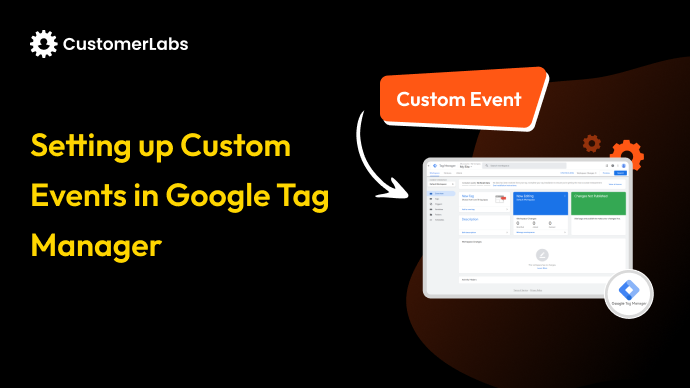Signal engineering is the game-changing approach that helps performance marketers crack the code on tracking and attribution in our privacy-first world. If you’re a performance or a growth marketer struggling to get clear data on what’s driving your conversions, this guide is for you.
We’ll break down why traditional tracking methods are failing marketers right now, then dive into what makes a strong signal versus noise in your data. You’ll also get practical tips you can start using today to build better signal collection into your campaigns, plus we’ll bust some common myths that trip up beginners in this space.
What is Signal Engineering?
Simple definition: Signal engineering is choosing and sending the most valuable actions from your business data (first-party data) to ad platforms, which makes the algorithms learn faster and spend your ad budgets smartly.
Signal engineering is your way of teaching ad algorithms what success looks like for your business. Instead of letting Facebook, Google, or TikTok guess what matters to you, you deliberately pick the most meaningful customer actions and feed them back to these platforms.
This is how I understand it. According to me, it simply means custom events. Like how you track a specific event and send it to ad platforms. And this specific action will change from business to business. I believe Meta agrees with me.
How Signal Engineering Works?
Every time someone interacts with your business, whether they browse your site, add items to cart, make a purchase, or become a repeat customer, that’s a signal.
But not all signals carry the same weight. A random page view tells the algorithm very little, while a high-value purchase from a customer who’s likely to buy again. That’s gold.
Your job is to identify which signals predict business success and prioritize those in your tracking setup. When you do this right, ad platforms stop wasting your budget on people who’ll never convert and start finding more of your ideal customers.
The magic happens because these algorithms are incredibly good at pattern recognition; they just need quality data to work with. When you give them clear, valuable signals consistently, they can spot the subtle characteristics that separate your best customers from window shoppers. This means better targeting, lower costs, and higher returns on your ad spend.
A simple analogy: Understanding Signal Engineering
Think of it like feeding your ads: give them junk food (weak signals) and they get sluggish; give them protein (high-value signals) and they perform better.
Your ad campaigns are like athletes training for a competition. Feed them the right nutrition, and they’ll perform at their peak. Give them junk food, and they’ll struggle to deliver results.
These (I mean the junk )might include:
- Page views with no engagement: Someone lands on your site and bounces immediately
- Low-value micro-conversions: Newsletter signups from people who never engage
- Accidental clicks: Mobile users who fat-finger your ad but have zero buying intent
Strong signals are like premium protein and vegetables; they fuel sustainable, powerful performance, like:
- Purchase events: Especially from customers who buy multiple times
- High-intent actions: Adding expensive items to cart or spending time on pricing pages
- Quality lead forms: When someone provides detailed information and responds to follow-up
This isn’t just theory; you’ll see the difference in your cost per acquisition, return on ad spend, and overall campaign stability within weeks of implementing better signal engineering.
Now that you understand exactly what signal engineering is and how it works. But remember, to send the right signals, you need “good data.”
What Makes a “Good Signal”?
If you want to know whether your data gives data, then follow the checklist below and ask yourself the following questions.
- Does your data respect consent settings?
If your signals violate privacy settings, you’re not just risking legal trouble. But you’re also building your optimization on shaky ground that could disappear overnight when browsers tighten their restrictions or when users change their privacy preferences.
Server-side tracking and first-party data collection are your best friends here. These methods typically respect user consent while still giving you valuable insights. Avoid relying heavily on third-party cookies or tracking methods that bypass user consent; they’re not sustainable long-term solutions for your signal engineering efforts.
- Does the data matter to your business? (e.g., a subscription purchase > an app open)
Not every user action matters the same for your business. A purchase or subscription says a lot more about intent than just opening an app. Too many marketers track everything equally, but that confuses the system.
Instead, give more weight to the actions that drive revenue purchases, sign-ups, or qualified leads. When your signals reflect real business value, your algorithms finally learn what counts.
- Can the data be tracked consistently (not blocked by browsers)?
Consistency is key in signal engineering. Your signals need to fire reliably across browsers, devices, and user scenarios; anything less leaves blind spots. With ad blockers, Safari’s ITP, and Chrome’s privacy updates, reliability is always at risk.
That’s why diversifying your tracking and leaning on server-side implementations is critical. Sending conversions directly from your servers ensures stronger, more dependable signals that platforms can learn from.
- Can platforms use it to optimize bids and targeting?
Your signals should be structured so that ad platforms can use them. That means sending clean, consistent data with context like value, product type, or user segment.
Google Ads and Facebook rely on this to bid smarter and find more high-value users. And don’t delay; send signals right when conversions happen, so algorithms know what drove results.
Now, if you answered the above questions correctly, then it is a jackpot for you.
Good signals = smarter algorithms = better ad results
When you nail your signal engineering, everything clicks into place. Advertising algorithms get clearer feedback about what’s working and what isn’t. They can identify patterns in user behavior that predict conversions and adjust bidding strategies accordingly.
Better signal quality directly translates to improved campaign performance. You’ll see more efficient spending, higher conversion rates, and better return on ad spend because the algorithms finally have accurate data to work with.
Your signal engineering efforts become the foundation that makes everything else in your performance marketing stack more effective.
Coming up are some real-world tricks or strategies that can help you win big.
In the meantime, you can also read on how to improve event tracking for Shopify
Real-World Strategies (So it clicks)
- E-commerce: Instead of flooding Meta with “Add to Cart,” focus on “Purchase with order value.” Instead, track real purchase events with actual order values. A $150 completed order is gold, while a $5 cart add that never converts is just noise.
- Lead Gen: Don’t stop at “Form Submit.” Track “Booked Demo” or “Qualified Lead.” Track what happens after the demo. Did they show up? Did they ask follow-up questions? Did they request pricing?
- Apps: Go beyond “Install.” Track “TrialPaid Conversion” or “Day-7 Active User.” Go deeper, track milestone events that show true usage, like “Completed First Workout” or “Created First Project.”
These signals guide algorithms to find not just downloaders, but real users who stick and succeed.
Breaking the Myths:
- More Events = Better Results
You’ve probably heard the advice to track everything: every click, scroll, or tiny action. On the surface, it sounds smart: more data should mean better optimization. But in reality, it’s like trying to drink from a fire hose while blindfolded.
For example, a software company that tracks free trial sign-ups will see far better results than one tracking page views, time on site, and newsletter sign-ups all at once.
In signal engineering, quality always beats quantity, and when you send platforms the right signals, their algorithms learn faster, spend your budget more efficiently, and drive better results.
- Privacy Ruined Ads
Yes, the landscape shifted, but the best marketers adapted while others complained. Privacy didn’t kill performance marketing; it exposed lazy strategies built entirely on third-party data and pixel tracking.
By using tools like Conversions API and enhanced conversions, they kept their signal quality strong. Your competitors have already figured this out and are outperforming their pre-iOS 14.5 results. The opportunity hasn’t disappeared; it’s still there for you, but only if you adapt your approach.
- It’s Just Tracking
This might be the most dangerous myth of all. Thinking signal engineering is just about installing pixels and setting up Google Tag Manager is like saying cooking is just about turning on the stove.
The technical setup is maybe 20% of the work. The real value comes from understanding your customer journey, identifying the moments that predict purchase intent, and designing a measurement system that captures those insights accurately.
Great marketers use signal engineering to understand customer behavior patterns, predict lifetime value, and make smarter budget allocation decisions across channels.
Conclusion
Your marketing campaigns are only as good as the signals you’re tracking. The old methods of relying on basic clicks and conversions are like driving with a foggy windshield.
Signal engineering helps you identify and optimize the data points that predict success, not just the ones that are easiest to measure.
Start by auditing your current tracking setup and asking yourself: Are these signals telling me what my customers will do next, or just what they already did? Focus on building a foundation of meaningful, predictive signals that capture real user intent.
Some of our brands are already set and running successful campaigns using signal engineering strategies.
Want to know how we did it for them? Book a call with our product expert.
If you want to directly implement the setup for free today.








